Farm
Shiloh Manor Farm
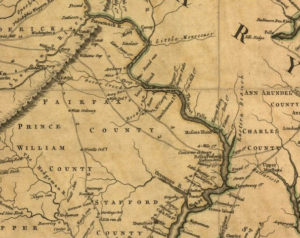 Nestled on the east side of Short Hill Mountain, the land that today is known as Shiloh was part of the immense five million acre land grant from the exiled British king Charles II to William Lord Fairfax in 1649. During the 1720s, a number of Quakers, Germans, Irish and Scots-Irish settled west of the Catoctin Mountains, farming the land owned by Lord Fairfax.
Nestled on the east side of Short Hill Mountain, the land that today is known as Shiloh was part of the immense five million acre land grant from the exiled British king Charles II to William Lord Fairfax in 1649. During the 1720s, a number of Quakers, Germans, Irish and Scots-Irish settled west of the Catoctin Mountains, farming the land owned by Lord Fairfax.
Among them were George and Mary Nixon, originally from Ireland. While they eventually called “Woodburn” in nearby Hamilton, Virginia their home, it appears likely they constructed the original two story stone blockhouse and cleared the land we call Shiloh. By 1770 the residence was home to their son George and his wife Anna Nixon. In the years following the Revolutionary War the residence was substantially expanded with classical Georgian architectural features such as strict symmetry, a centered panel front door topped with a rectangular window, five symmetrically arranged windows, and chimneys on both sides of the home.
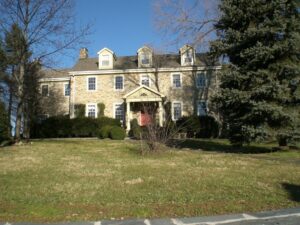 The rights to the property were assumed by George and Anna’s eldest son James in the years immediately following the Revolutionary War. While George and his sons James, John and Jonathan did not actively fight in the Revolutionary War (probably owing to their Quaker convictions) they were recorded to have supplied the Continental Army with goods and services.
The rights to the property were assumed by George and Anna’s eldest son James in the years immediately following the Revolutionary War. While George and his sons James, John and Jonathan did not actively fight in the Revolutionary War (probably owing to their Quaker convictions) they were recorded to have supplied the Continental Army with goods and services.
The barn is characteristic 18th century architecture with hand hewed structural lumber and joints held together by mortise and peg construction. Like the residence, the barn walls consist of 2 foot thick dressed field stone, presumably harvested during the clearing of the fields.
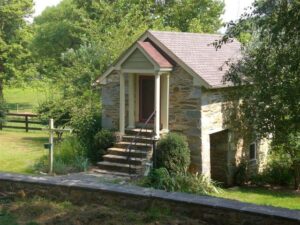
The spring house – also stone – is carved “G & A N, 1770”; which probably refer to George and Anna Nixon who were married around 1770.
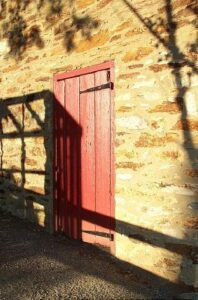
Long fall shadows on barn, courtesy Agnes Readmond
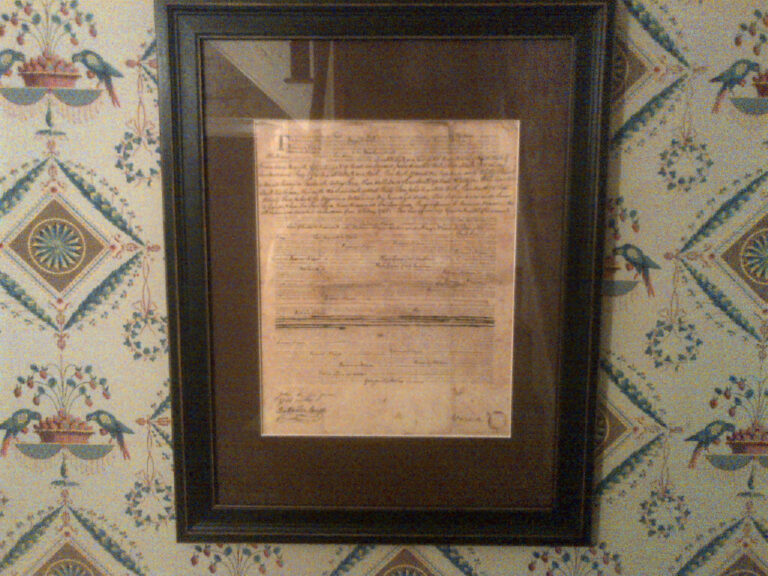
We were privileged to obtain the original indenture on the farm granting rights to the property – at that point owned by William Lord Fairfax and James Nixon in 1787.
What is fascinating about this indenture is that after the Revolutionary War (the Treaty of Paris was signed in 1786), land that was held by Lord Fairfax was confiscated and given to tenants like the Nixons who worked the land. Yet our indenture records that as late as 1787, the rights of William Fairfax were still recognized; again possibly a consequence of the Quaker convictions of the Nixons. Also notable is that the indenture is signed by George Nicholas on behalf of William Lord Fairfax (who resided in England). George Nicholas was himself an interesting person, having served several times as a member of the Virginia House of Delegates. Nicholas later moved west and was the first professor of law at Transylvania University in Kentucky. He was also the attorney general of Kentucky for a short time.
The property was spared the destruction emblematic of the so called “Burning Raid” that afflicted much of western Loudoun County during the later years of the War between the States. Reportedly, the property was the temporary resting place to two confederate soldiers killed near the farm by the Northern patrol. The property remained in the Nixon-Legard family until 1979 when the residence, barn and 159 acres were sold to Richard Rogers. It was Rogers who subdivided the farm into Wheatland Estates while retaining 17 acres with the house and barn. We purchased the property in 2001 and continued the restoration of the residence and property, including the renovation of the library, construction of the driveway retaining walls, the addition of a dependency modeled after a circa 1840 Italianate farm cottage, construction of a stone temple-gazebo and restoration of the gardens around the property.
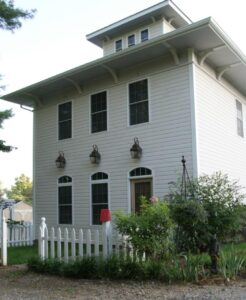
Designed by architect Richard Calderon and accurate down to the rough milled oak floor and porcelain door knobs, the new Italianate cottage complements the 18th century Georgian residence.

Peacock sunning himself at the stone “temple” or gazebo. Located near the back garden it’s a prime place to enjoy dinner.
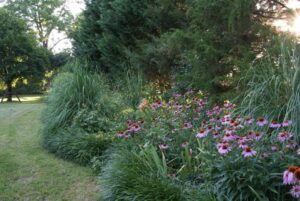
Back garden. Jefferson once said, “No occupation is so delightful to me as the culture of the earth, and no culture comparable to that of the garden…” Jefferson to Charles W. Peale, August 20, 1811.
